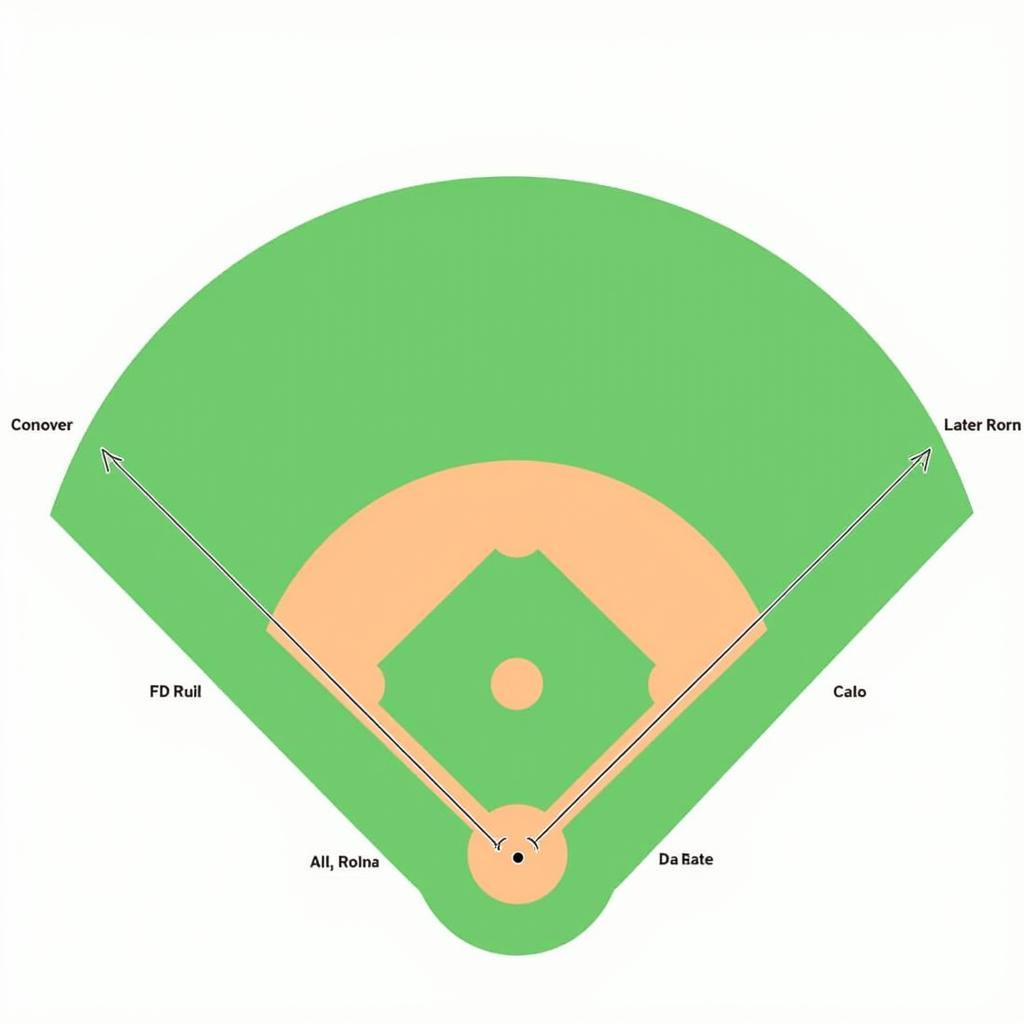Baseball Field Position Template: Your Guide to the Diamond
Understanding the layout of a baseball field is crucial for both new and seasoned fans. Whether you’re a coach sketching out plays, a parent explaining the game to your child, or a new fan looking to grasp the basics, a visual aid like a Baseball Field Position Template can be invaluable. It provides a clear, concise representation of where each player is positioned and their role in the game.
Deciphering the Diamond: A Closer Look at a Baseball Field Position Template
A typical baseball field position template depicts the four main areas: home plate, the infield, the outfield, and the foul territory. Each area hosts specific positions, and understanding these positions is key to following the flow of the game.
Infield Positions: The Heart of the Action
The infield is where most of the fast-paced action occurs. A standard baseball field positions template will show you:
- Pitcher (P): Positioned on the pitcher’s mound, their primary role is to throw the ball to the catcher, aiming to get the batter out.
- Catcher (C): Positioned behind home plate, the catcher catches pitches the batter doesn’t hit, calls pitches, and guards home plate.
- First Baseman (1B): Covers the area around first base, catches throws from other infielders to make outs, and fields balls hit in their direction.
- Second Baseman (2B): Covers the area between first and second base, fields ground balls, tags runners, and covers second base on steal attempts.
- Third Baseman (3B): Covers the area around third base, known as the “hot corner” due to the high velocity of balls hit there, fields ground balls and bunts, and throws to first base for outs.
- Shortstop (SS): Covers the area between second and third base, backs up other infield positions, and is often involved in double plays.
Outfield Positions: Patrolling the Grass
The outfield is the expansive grassy area beyond the infield. A baseball field positions template will typically show three main outfield positions:
- Left Fielder (LF): Covers the left field area, catches fly balls, fields ground balls hit past the infield, and throws the ball back to the infield to prevent runners from advancing.
- Center Fielder (CF): Covers the center field area, considered the captain of the outfield, responsible for directing the other outfielders, catches deep fly balls, and covers a lot of ground.
- Right Fielder (RF): Covers the right field area, catches fly balls, fields ground balls, and backs up the first baseman on throws from the right side of the infield.
Understanding Roles and Responsibilities
Each position on the field comes with its unique set of responsibilities and challenges. Using a baseball field position template, coaches can illustrate defensive strategies, explain different game situations, and help players understand their roles within the team.
 Baseball Field Positions Diagram
Baseball Field Positions Diagram
Beyond the Basics: Using a Baseball Field Positions Template Effectively
While a simple baseball field positions template provides a basic understanding of player positions, you can find templates with additional features and details:
- Baseball Game Roster Template: This template combines a field layout with space to fill in player names for each position, helping coaches and fans keep track of who’s playing where.
- Baseball Depth Charts: These charts provide a visual representation of a team’s roster depth at each position, listing the starting player, backups, and potential replacements.
- Softball Position Template: While similar to baseball, softball fields have slight variations. A dedicated softball position template will reflect these differences, such as the inclusion of a fourth outfielder.
 Baseball Game Roster Template Example
Baseball Game Roster Template Example
Finding the Right Baseball Field Position Template for Your Needs
Numerous resources online offer free printable baseball field position templates. When choosing one, consider your specific needs:
- Purpose: Are you using it for coaching, learning, or simply as a visual aid?
- Detail Level: Do you need a basic layout or one with additional features like player names, abbreviations, or defensive strategies?
- Format: Do you prefer a printable version or an interactive digital template?
Once you’ve considered these factors, you can find a template that best suits your requirements.
Conclusion: Mastering the Diamond One Position at a Time
Understanding the intricacies of a baseball field can significantly enhance your enjoyment of the game. Whether you’re a coach strategizing for your next game or a novice fan eager to learn, a baseball field position template serves as a valuable tool. It provides a clear, concise visual representation of player positions and their roles, helping you decipher the action on the diamond and appreciate the nuances of this beloved sport.
Need assistance? Contact us at Phone Number: 0989060241, Email: [email protected], or visit us at Address: Lot 2, Hamlet 5, An Khuong, Hon Quan, Binh Phuoc, Vietnam. Our customer support team is available 24/7.

